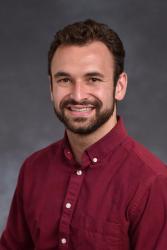The original version of this article mentioned “CS for all” initiatives as a general description of expanding access to CS in high schools. However, the label “CS for all” is ambiguous as it has been used both as the name of an Obama-era policy initiative and is the name of a member organization of Code.org’s Advocacy Coalition. This article was reworded to avoid confusion.
As the U.S. economy becomes more digitalized, employment in computer and information technology occupations is projected to grow by 10% in the next decade. In response to this increasing demand for technology skills, many states are working to expand computer science (CS) learning opportunities across K-12 classrooms. Thirty states have adopted a key part of Code.org Advocacy Coalition’s policy recommendations, which require all high schools to offer CS coursework, while eight states (and counting) have gone a step further in requiring all students to take CS as a high school graduation requiremen Despite heightened policy interest in CS access, however, research is surprisingly sparse on how the expansion of CS coursework affects postsecondary and labor market outcomes. In a recent working paper, we aim to fill this research gap by investigating the impact of the expansion of high school CS course offerings. The State of Maryland, which is the context of our study, has rapidly expanded CS course offerings over the last decade. A 2018 law further requires all Maryland high schools to offer at least one “high-quality” CS course aligned with rigorous K-12 CS standards. These “high-quality” courses include foundational courses such as Computer Science Essentials, AP courses such as AP Computer Science Principles, and more specialized programming courses. They are also closely aligned with Code.org’s definition of “foundational” CS courses. Using rich longitudinal data from the Maryland Longitudinal Data System (MLDS) Center, our study is among the first that offers causal evidence on how access to these “high-quality” CS courses in high school affects college major choice and early-career earnings. Our research design exploits the fact that high schools adopted CS courses at different points in time. In a nutshell, we compare cohorts of students who were exposed to CS to prior cohorts of students from the same high school that were not exposed to CS. This design allows us to estimate causal impacts of both CS course offering and CS course-taking.
Finding #1: Exposure to high school CS coursework raises CS BA receipt and improves early-career labor market outcomes.
Taking a high school CS course leads to a large, five-percentage-point increase in students’ likelihood of earning a bachelor’s degree in CS. Figure 1 shows the estimated effects of taking a CS course in high school on the likelihood of completing a bachelor’s degree for a selection of subjects. Though only the point estimate on CS majors is statistically significant, the negative coefficients for other STEM fields, social sciences, and humanities suggest students may be switching from these fields into CS. We also find positive impacts on employment and earnings at age 24: High schools offering high-quality CS courses raise students’ likelihood of being employed by 2.6 percentage points and annual earnings by about eight percent. Importantly, these estimates are based on all students, not just those who pursue CS in their later studies or careers. These findings on degree receipt are similar in magnitude to prior research on STEM course-taking. For example, one study has found that taking advanced secondary science coursework raises STEM degree receipt for male students by six percentage points. In another study, taking advanced secondary mathematics coursework raises engineering degree receipt by nine percentage points for females. Along with these studies, our study suggests that policies that expand high school STEM offerings can increase degree receipt in related fields.
Finding #2: Effects on CS BA receipt and earnings are similar or larger for students who are historically underrepresented in the CS field.
CS, along with many other STEM fields, have historically been dominated by workers who are white or male, and recent policy efforts have been intended to make CS learning and career options more accessible for all. On receipt of bachelor’s degrees in CS, high school CS course-taking has similar and sometimes even larger effects for females, students from lower socioeconomic status (SES) backgrounds, and Black students relative to peer groups that have been better represented in CS fields historically. For example, taking a CS course raises receipt of CS bachelor’s degrees by seven percentage points for Black students, five percentage points for Hispanic students, and six percentages for white students, which are statistically indistinguishable from each other. The biggest difference comes from subgroup analysis by SES. The effect size is nearly eight percentage points for low SES students, while only two percentage points for their counterparts (though it is not statistically significant).
A striking difference across groups emerges when we look at earnings outcomes. In Figure 2, we plot the impact of CS course-taking in high school on earnings for different student demographic groups. The overall effect is also included for comparison. We find that high schools offering CS coursework increase earnings at age 24 by eight percentage points overall (see Figure 2 below). Even more, when we break these estimates out by different student subgroups, we find these earnings effects are driven by historically underrepresented subgroups, including females, those from low SES backgrounds, and Black students. Together, these findings suggest that exposing students to CS coursework in high school can be an effective approach for increasing the supply of CS degree recipients and professionals in the labor market, with enhanced earnings particularly for historically underrepresented groups.
Finding #3: Although positive long-run impacts of CS course exposure are stronger for historically underrepresented groups, CS course take-up rates are lower among these students.
Given the range of long-run benefits of taking a high school CS course, which student groups are most likely to take advantage of this opportunity? We find that high schools offering CS raises the chance of students taking a CS course by about six percentage points for all students, on average, as not all students end up enrolling in the class when offered. Specifically, CS course take-up increases by about 13 percentage points for Asian students, but only six percentage points for Black students and four percentage points for Hispanic students. The contrast is similarly stark for students at different achievement levels: Based on their prior math achievement, the top 25% of students have an increased CS course-taking rate almost three times higher than that of the bottom 25% of students. We also observe slightly lower CS course take-up rates for females and students from low SES backgrounds compared to their counterparts, but the differences are not statistically significant.
Overall, although underrepresented groups of students benefit from taking a CS course if they enroll, they may be less likely to take on this opportunity compared to their peers. Similar lower participation rates among under-represented groups are also observed in other states and nationally as well. For example, in California, female students are much less likely to take CS despite having similar access relative to male peers. National data also show that male students are more than twice as likely to take CS compared to females. Thus, it is critical to identify and remove the barriers underrepresented students face regarding CS course enrollment.
Rapid expansion of CS courses raises questions about the capacity of schools and teachers to fulfill new requirements.
The number of states requiring all high schools to offer CS coursework has increased from just four states in 2017 to 30 states in 2023. We can also expect more states to follow the existing eight states that have mandated CS courses as a requirement for high school graduation. As Maryland and many other states continue their efforts in expanding CS courses in K-12 schools, this fast growth also raises concerns about whether schools are prepared to implement new CS requirements. In particular, a major bottleneck is the shortages of qualified CS teachers, a challenge also faced by many other countries that try to expand CS education. This is not surprising, given that individuals with CS skills and qualifications often have other highly paid job alternatives.
The limited supply of CS teachers also has implications for the current CS teacher workforce. Our own analysis of Maryland data suggests that most high schools that offer CS courses only have one CS teacher, meaning that they do not have colleagues to do co-planning or to share the challenges they encounter in their CS classrooms. In addition, a large share of Maryland CS teachers teaches out of their certified fields without adequate preparation for the necessary skills needed to teach CS.
These staffing challenges require school systems to concentrate efforts to boost the supply of qualified CS teachers as well as provide support to existing CS teachers to ensure quality CS instruction. States may consider allocating funding to expand traditional and alternative pathways to CS teacher certification. Focusing on professional development that provides training on CS content and pedagogy for existing teachers who will be new to teaching CS may also offer the potential to promote impactful CS instruction.
Taken as a whole, our research offers reasons for optimism about policies that expand access to CS courses in high school, especially given the positive effects of CS course-taking on CS degree recipients and early-career earnings for underrepresented student groups. However, policymakers must also be mindful of the way course expansion policies are implemented and improve the supply of qualified CS teachers to ensure all students benefit from these opportunities.









